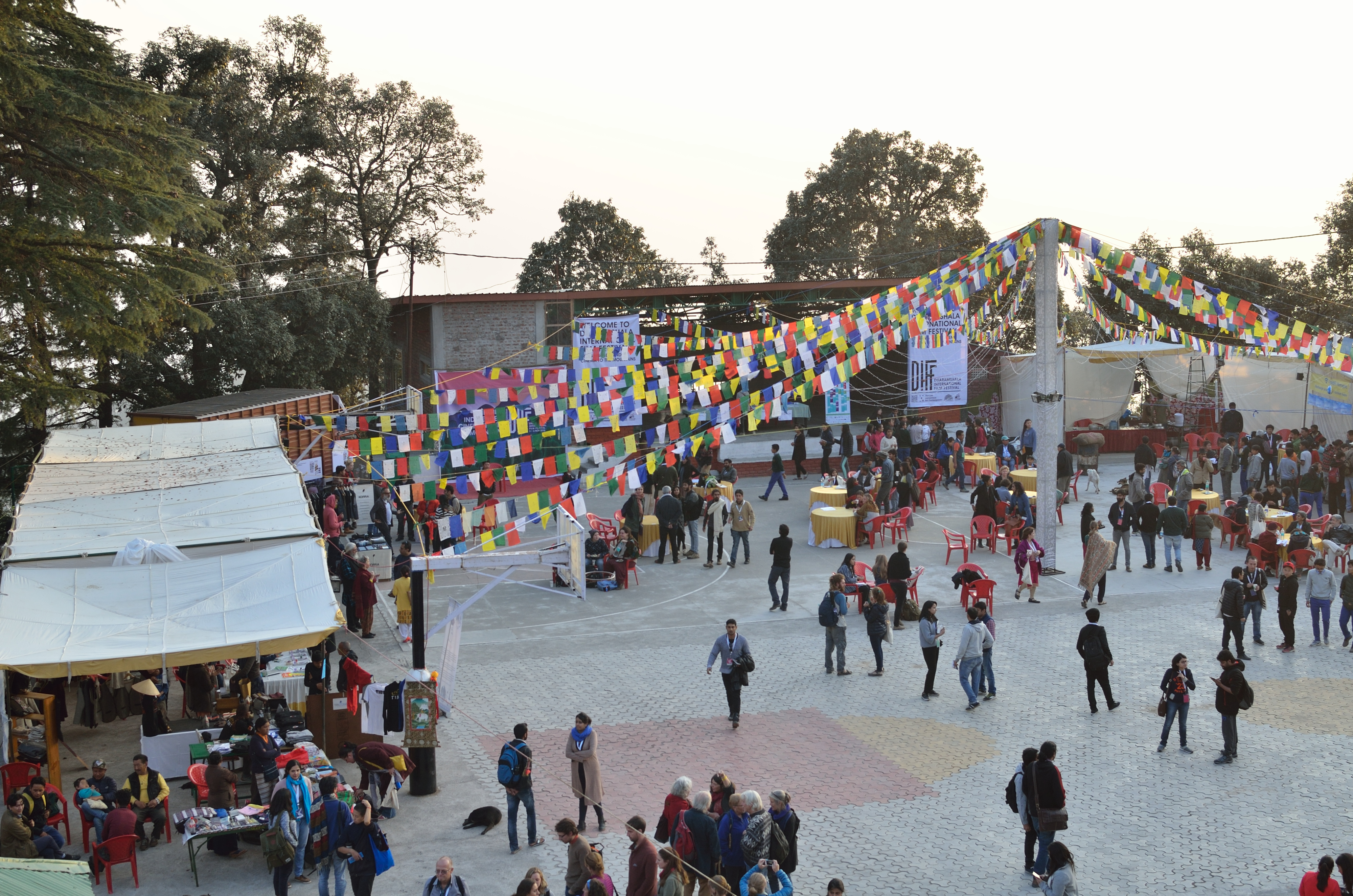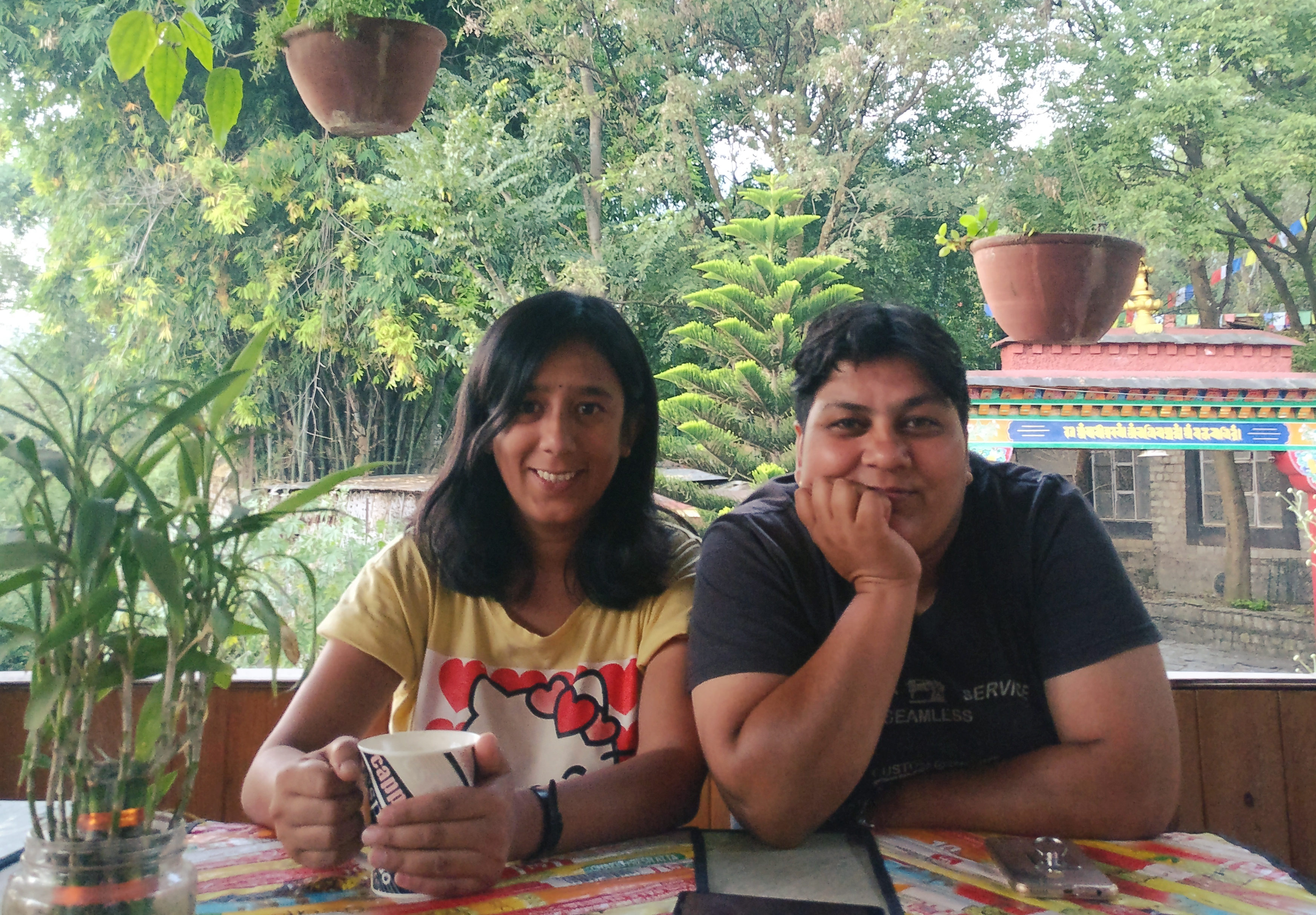आज दिया-दियारी है। हमारे गाँव घर का जाना-चीन्हा त्यौहार। दिया-दियारी से दीपावली तक हमारे पास बहुत कुछ था जो छूट गया। चन्देव बाबा थे, हमारे पुश्तैनी कुम्हार, उनके हाथ की बारीक कला थी, घुर्ली थी, गुल्लक थे, दिए थे, भोंभा थे, घंटियां थी… उनके हाथ की छुअन थी कि माटी के बेडौल टुकड़े में भी जान भर देती— कोई न कोई आकृति निकाल ही देती। बचपन में दादी और माँ कभी किसी बर्तन के लिए भेजतीं तो मैं तमाम छोटी-बड़ी रंग-बिरंगी आकृतियों बीच देर तक चक्कर काटता रहता। कभी-कभी उनके चाक का चलना, हाथों के सहारे नई आकृतियों का उभरना और एक सूत के सहारे बहुत बारीकी से इसे मिट्टी के शेष लोने से काटकर अलग कर लेना देर तक निहारता रहता। कभी पूछता बाबा ये चाक एक डंडे से कैसे चलता है ? चंदेव बाबा बड़े प्यार से समझाते कि यह कोई बड़ी बात नहीं बस थोड़ा सीखना होता है । मैं कहता बाबा मैं भी चलाऊंगा तो वो बोलते, ‘बाबू लोग चाक ना चलावे ला। ई त कोंहार क काम ह।’ कोंहार अलग होता है और बाबू के लाइका-बच्चा अलग ये बात गांव घर में बहुत छिटपन में ही पता चल जाती है, सो मुझे भी पता थी और मैं विशिष्टता-बोध से भरकर हट जाता। हां इतना अवश्य था कि अपने समवयस्क दूसरे सवर्ण लड़को की तरह नाम लेकर बुलाने में तब भी संकोच होता था और अब भी वय में अधिक लोगों के साथ ऐसा करने में संकोच होता है ।
जब कभी कोई बर्तन लाने जाना होता वे तो खुद उस बर्तन को अंगुली से बजाकर देखते की कहीं टूटा तो नहीं है और अगर टूटा होता तो बदल देते। घर जाने पर बेहद अपनत्त्व से बैठातीं थी उनकी ‘मेहरारू’। दीया, ढकनी, पराई, मेटा, कलसा, कराही आदि किसके घर किस त्यौहार पर कितना लगता है, उन्हें याद रहता। जाते ही उतना गिन कर रख देतीं और अक्सर तो वे खुद ही पहुंचा आतीं त्यौहार से एक दिन पहले या जाने पर साथ आ जातीं सिर पर खांची में लादे। घर तक पहुंचाकर ही जातीं। सत्ती मैया की पूजा के लिए माटी की चिरई वो खुद अपने हाथ से बानतीं। इस पूजा में सत्ती के मुकुट में फांसी हुई माटी की चिरई का क्या तर्क मेरे समझ से आज भी परे है, लेकिन जब सत्ती मैया के सिर पर इन चिराइयों से लदा माटी की मुकुट लगता तो सचमुच बड़ी उत्सुकता होती हम बच्चों को कई बार पूजा पूरी होने से पहले ही बच्चे उसे लूट लेते। घर की बड़ी-बूढ़ी औरतों को उसकी रखवाली करनी पड़ती।
गज़ब क्रेज था माटी की उस चिरई का। आज जब सोचता हूं तो याद आता है कि कुछ भी तो नहीं था उसमें; एक चोंचनुमा आकृति के सिवा, बेढब और बेडौल सा दिखाता है अब लेकिन तब पलक झपकते ही सत्ती मैया का मुकुट चिरई विहीन और कभी-कभी तो जब हाथ में कुछ नहीं आता तो कोई-कोई बच्चा वह मुकुट भी ले उड़ता। तब चंदेव बो आजी हम जैसे दो-चार भीड़-भीरु बच्चों को पास बुलाकर एक एक चिरई थमा देतीं जो उन्होंने पहले ही उसे अतिरिक्त रूप से बनाकर हमारे लिए रखे होते । हां गिरहत्त(गृहस्त) से लेन देन में कोई मुरव्वत नहीं था कभी-कभी किसी गिरहत्तिन से दियरी (दीपक) के बदले अनाज लेने की हुज्जत में घंटों अड़ी रहतीं और अंत में अनाज छोड़ के चली जातीं फिर गिरहत्त को अपने बच्चों से उसे उनके घर भेजना पड़ता, वो भी उनके मन माफिक।
दिवाली के पहले की शाम हमारे लिए खास होती । हम कुछ दिनों पहले से ही उसका इंतज़ार करते थे। अगर अपने हाथ में भोंभा आने से पहले गाँव में कहीं भोंभा की आवाज सुनाई पड़ जाती तो बहुत कोफ्त होती, लगता कि इस भोंभे की पहली आवाज़ मेरे यहां क्यों न हुई और हम बार-बार घर के दरवाज़े की ओर लपकते। शाम को कुम्हारिन आजी के आते ही हम उन्हें घेर कर बैठ जाते और उनकी खांची से कपड़ा हटाने का इंतज़ार करते। जब तक वह मान और दादी को दिए गिनकर देतीं तब तक हमारी उत्सुकता चरम पर पहुंच चुकी होती और बार-बार कपड़े में ढके खिलौनो की टोह लेते रहते थे कि पिटारे में क्या-क्या है। इस बीच कई बार पूछकर दादी और मम्मी की झिड़की भी खा चुके होते और कुम्हारिन आजी के दीयों की गिनती भी भुला चुके होते। दीयों को वे सावधानी से गिनती उनकी संख्या के अनुपात में उन्हें अनाज़ लेना होता, पर मुझे जहां तक याद है गुल्लक को छोड़कर वे बच्चों के खिलौनों का पैसा नहीं लेतीं।
खिलौने से कपड़ा हटाते ही हमारी उत्सुकता कार्य-रूप में परिणत हो जाती। ये रहा भोंभा, ये घंटी, ये गुल्लक, ये रहा जानता और ये हाथी-घोड़ा आदि-आदि। सब अपनी-अपनी पसंद का ले उड़ते। दीदी लोगों के हिस्से जांता और चुल्हा आता तो अपने हिस्से बाकी का साम्राज्य। गुल्लक सबके अपने-अपने होते। सबका साल में एक-एक का कोटा निर्धारित होता, सो वह सबको मिलता था। अब अंत में बारी होती घुर्ली की। हर पुरुष पर एक। यानी, घर में चार पुरुष का मतलब पांच घुर्ली। घुर्ली यानी मिट्टी का छोटा पात्र जिसमें चिउड़ा या लाई रखकर चीनी की मिठाइयां ककनी, कुटकी और घुर्ली (घड़ा के आकार की चीनी की मिठाई) गोबरधन बाबा पर चढ़ाई जाती थी। यह मिठाई लड़कियों के लिए वर्जित थी। उनके लिए अलग से निकाल कर पहले रख दी जाती थी। जब कोई लड़की घुर्ली में राखी मिठाई खाने का हाथ करतीं तो बूढ़ी दादियां-नानियां कह उठतीं कि गोधन की मीठी खाने से मूंछ निकाल आएगी। लड़कियों को नहीं खाना चाहिए।
हमारे यहां दिया तो नेपथ्य में रहता असली महत्त्व घुर्ली और घांटी (घंटी) का था। पता नहीं क्यों मेरा मन आज इसका कुछ निहितार्थ खोजाना चाह रहा है। यह कहां तक सही है कह नहीं सकता, पर दिवाली की दियारी पर गोधन की घुर्ली का महत्त्व इतिहास किसी युग की ओर संकेत करता है। शायद कभी ऐसा समय रहा हो जब दियारी से ज़्यादा महत्त्व गोधन या अन्नकूट का हो। गोधन यानी पशुपालक संस्कृति का उत्सव और अन्नकूट यानी कृषी संस्कृति का दाय। गोधन को तो स्पष्टतः चरवाहे देवता कृष्ण से ही जोड़ा जाता है। कृषि और गोपालन के साहचर्य ने इन दोनों उत्सवों को एक में मिला दिया और अन्नकूट और गोवर्धन पूजा एक साथ मिल गए।
इस सदियों के सहचरी के बावजूद हमारे क्षेत्र की भोजपुरी महिलाओं के लिए गोधन बाबा अब भी पहुने ही हैं। पहुने यानी अतिथि यानी बाहर से आए हुए। स्पष्ट है कि गंगा की इस घाटी में चरवाही आभीरादि जातियों के आने से पूर्व कृषि-संस्कृति अपने पूर्ण-विकास पर थी। इसलिए उसने पशुचारक घुमंतू अतिथियों को स्वीकार तो किया, लेकिन पहुने बनाकर ही। वैसे भी ये जातीयां हमारे यहां प्रायः या तो गाँव के सीमांत पर बसती हैं या उनसे दूर किसी पुरवे या डेरे की शक्ल में। मैंने बचपन में गर्मियों के दिनों में अहीर और गंदर जातियों के लोगों को दूर बांड (खुले चारागाह) में हार की हार गाएं या भेंड़े लेकर रात भर खुले आसमान के नीचे सोते और घूमते देखा है, जो बरसात की शुरुआत के साथ अपने गाँव-घर लौट आते थे।
अस्तु, अब तो पहुने गोधन बाबा हमारे क्षेत्र में पूरे पहुने या मेहमान बन चुके हैं और पहुने का अर्थ संकोच होकर दामाद या बहनोई का रूप ले चुके हैं। भारतीय लोक में यः सम्मान संभवतः शिव के बाद गोधन बाबा को ही मिला है (अवश्य ही भगवान राम को छोडकर जो मिथिला के घर-घर के मेहमान या पहुने है, पर बाकी भारत के बेट हैं)। उनके स्वागत में बकायदे परिछन होता है, औरतों के समवेत स्वर में ‘गोधन बाबा अइलन पाहुन हो’ का स्वागत-गीत होता है और उसके बाद आतिथ्य में मिठाई, खीर, लाई और चिउड़ा के साथ तरह-तरह की सामर्थ्यानुरूप मिठाइयां भी। यह पूरा पूजन, गान और उत्सव पुरुष-विहान होता है, वैसे ही जैसे कोहबर के दरवाज़े पर अकेला वर पुरुष होता है बाकी सब स्त्रियां। हां, इस पूरे उत्सव का प्रसाद पुरुष को मिलता है, स्त्रियां उससे वंचित रहती हैं।
इससे ऊपर के तथ्य को समझने में एक और छोटा सा सूत्र हाथ लगता है, वह यह कि गोधन बाबा के शामिल होने से पूर्व यह पूर्णतः स्त्रियों का उत्सव था। इसमें पुरुष की उपस्थिति लगभग अब भी वर्जित है, तब यह पूर्ण वर्जित रही होगी। बाद में समाज के गोबरधनों ने उस उत्सव का प्रसाद तो छीन लिया, लेकिन उसमें स्त्रियों के उत्सव का अधिकार और स्त्रियों की मनोव्यथा की अभिव्यक्ति का अवसर नहीं छीन पाए। यह बात इसलिए भी कही जा सकती है, क्योंकि गोबरधन पूजा से पहले स्त्रियां उपवास रखती हैं और शायद यह पहला त्यौहार है, जिसमें घर के सभी पुरुषों को सराप (शाप या गाली) देती हैं और अंत में उनके दीर्घायु होने की कामना भी।
भारत में कृषि सभ्यता के विकास के सबसे पुराने साक्ष्य बताते हैं कि भारत में गेंहूं से पूर्व धान अस्तित्व में था और इसकी सबसे अच्छी पैदावार का क्षेत्र गंगा की घाटी है। भारतीय धर्मसाधना में कल्पना, रचना और उत्पादन का दायित्व देवियों के हाथ रहा है, चाहे वह सरस्वती हों, पृथ्वी हों, शाकंभरी हों या अन्नपूर्णा। इसलिए यह माना जा सकता है कि हमारी आदिम मातृकाओं ने ही भारत में कृषक संस्कृति की नींव रखी, पुरुष तो घुमंतू था, आखेटक या चरवाह था। स्त्रियों ने ही आपनी संतानों की सुरक्षा के लिए घरौंदों के सपने रचे, घर बसाए, चूल्हा, चाकी, रोटी, दाल की चिंता की और एक जगह रहकर कृषि की शुरुआत की। यह गलत धारणा है कि भारतीय जन-मानस केवल शिवलिंग के रूप में पुरुष के वारचास्व को पूजता है, सच यह है कि वह कलश को शिवलिंग से अधिक महत्त्व देता है। शिवलिंग की पूजा मंदिरों में जाकर होती है, उसे हम सामान्य भारतीयों के घरों में स्थान नहीं, जबकि कलश हमारे घरों में छोटी बड़ी पूजाओं में भी स्थापित होता है।
कलश केवल घड़ा नहीं हैं, वह जहां पूरित होता है, उसके आसपास गीली मिट्टी में बोये गए अन्न के अंकुर और उसके मुझ पर आम्र पल्लव, पात्र और उसमें रखा अन्न होता है। यह कलश वस्तुतः सृजन का, मांगल्य का मातृत्व का प्रतीक है। उसकी पूर्णता और उसके पार्श्व में हरा-भरा शस्य उसके मातृका रूप को व्यक्त करता है। हाँ उसके साथ गौरी-गणेश के रूप में गोबर की लघु आकृति अवश्य गोधन और अन्नकूट की तरह बाद में कृषि और पशुपालक संस्कृति के बीच स्थापित होने वाले साहचर्य का प्रतीक है । गोबर से बनी आकृति गौरी और गणेश दोनों ही नहीं, बल्कि गणेश का प्रतीक है। गौरी तो कलश रूप में वहां पहले से उपस्थित थीं, गणेश बाद में जुड़े। इसीलिए मान-पुत्र के रूप में गौरी गणेश का युग्म चल निकाला। गणेश के मानस पुत्र होने की कल्पना भी शायद इसी साहचर्य की ओर इशारा करती है, जो सीधा न होकर दो संस्कृतियों के सम्मिलन से हुआ है। यह सहास्तित्व भारतीयता की अविरोधी धर्म की महाभारतीय और ‘तत्तुसमन्वयात्’ औपनिषदीय संकल्पनाओं के मेल में बैठती है।
बाबा कहा करते थे कि हमारे पूर्वज बाद में गंगा के इस मध्य क्षेत्र में आए, वे मूलतः कन्नौज के थे। उससे पहले यह क्षेत्र कैसा था क्या था इसका अनुमान न इतिहास की पोथियों में है और न हमारे अनुभव ज्ञान के दायरे में। पर, अनुमान और किंवदंतियों के आधार पर हमारे पूर्वजों के इस क्षेत्र में आबाद होने से पूर्व इस क्षेत्र में कहार, कुम्हार, कमकर, चेरो-खरवार आदि रहते थे। इन्हीं लोगों ने हमारे गाँव के आस-पास के कई गांवों में बड़े-बड़े तालाब खोदे हैं, जो सैकड़ों बीघे लंबे चौड़े हैं और इन गांवों के वर्तमान बाशिंदों से पुराने हैं। हालांकि अब काफी कुछ सिमट भी गए हैं। बाबा के शब्दों में ये मटियार जातियां थीं , मटियार यानि माटी का काम करने वाली। माटी में जन्मीं माटी की सन्तानें। भारत की खेती, भारत की कला और भारत के लोक-पर्व इन्हीं माटी की संतानों की देन है। बाद में आने वाले बाशिंदों ने तो बस इनमें खुद को मिला लिया या ये खुद ही अपना माटी के तरह अपना वजूद खोकर अलग आकृति में ढल गए। ये माटी की सन्तानें ही हमारी धरती के वे असंख्य दीप हैं जो कृत्रिमता की रंगीन झालरों के बीच भी संस्कृति के टिपटिमाते दीपों की तरह अपना वजूद बनाए हैं ।
The post इस दिवाली आपके खिलौनों की बड़ी याद आ रही है कुम्हार बाबा appeared first and originally on Youth Ki Awaaz and is a copyright of the same. Please do not republish.
 Jay Borade became the first choreographer to
Jay Borade became the first choreographer to Prabhu Deva who is often called the father of contemporary dance forms in India has won the National Film Award for Best Choreography
Prabhu Deva who is often called the father of contemporary dance forms in India has won the National Film Award for Best Choreography

 Remo D’Souza is one of the most popular choreographers in India. Though his main job is choreography, he has occasionally acted and directed movies as well. In addition to contributing to Hindi cinema, he has choreographed songs for films in the Bengali language. In addition, he has judged many dance shows in India including “Jhalak Dikhhla Jaa” with Madhuri Dixit and Karan Johar.
Remo D’Souza is one of the most popular choreographers in India. Though his main job is choreography, he has occasionally acted and directed movies as well. In addition to contributing to Hindi cinema, he has choreographed songs for films in the Bengali language. In addition, he has judged many dance shows in India including “Jhalak Dikhhla Jaa” with Madhuri Dixit and Karan Johar.

















